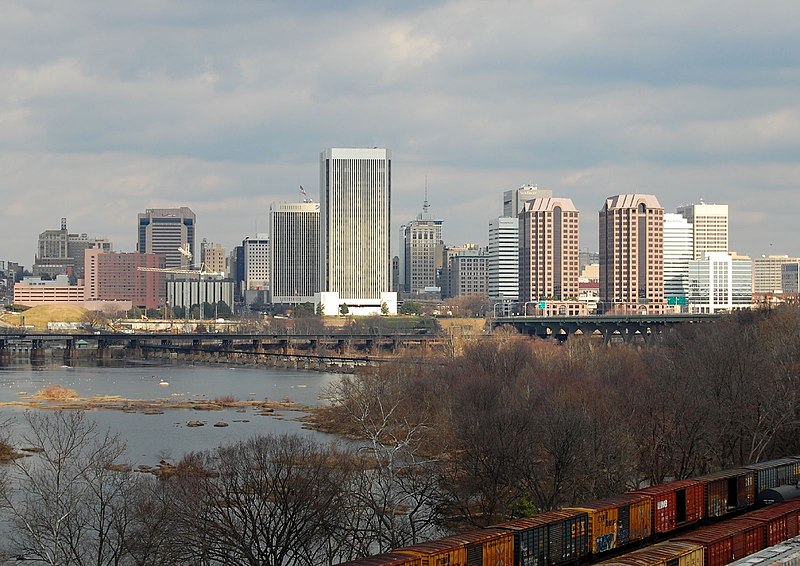

Richmond
Richmond, Virginia has a long history. I have been to Richmond before in real life. It’s a city with beautiful architecture, great people, and a dynamic history. Also, it is the capital of the Commonwealth of Virginia. I’m from Virginia, so I heard stories and information about Richmond, VA all of the time. Today, it has 223,170 people. So, it is the fourth largest city in the state of Virginia. Its metropolitan area is 1,260,029, which is the third most populous metropolitan area in Virginia too. Many of my aunts and cousins live in Richmond, Virginia and surrounding areas, so Richmond has a personal love by me. It is located on the fall line of the James River. To the south of Richmond, is Petersburg. To the east of Richmond is Williamsburg. West of Richmond lies Charlottesville (which is located close to the mountains). Also, Washington D.C. is to the north of Richmond as well. Richmond is a city that is found on the Interstates of 95 and 64. It is surrounded by Henrico and Chesterfield counties. It is filled with a massive amount of history and a large amount of African American culture (as Richmond, VA is a city that is mostly black American in its demographics). The economy of Richmond is driven by law, finance, government, and legal plus banking firms. There are many federal, state, and local government agencies located in the city. For example, Richmond is home to both the United States Court of Appeals for the Fourth Circuit, one of 13 United States courts of appeals, and the Federal Reserve Bank of Richmond, one of 12 Federal Reserve Banks. Dominion Resources and MeadWestvaco, Fortune 500 companies, are headquartered in the city, with others in the metropolitan area. It has about 62.5 total square miles. As a city, its history has spanned for over 2 and a half centuries. From the colony of Virginia, the American Revolutionary War, the Civil War, Reconstruction, and beyond, Richmond has impacted the American cultural landscape in diverse ways. Now, it is time to show the real story about Richmond, Virginia.
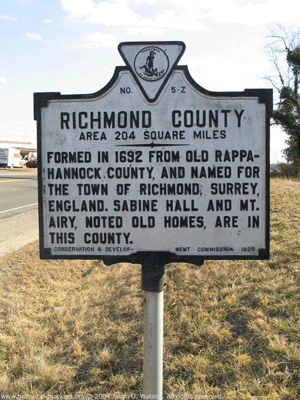
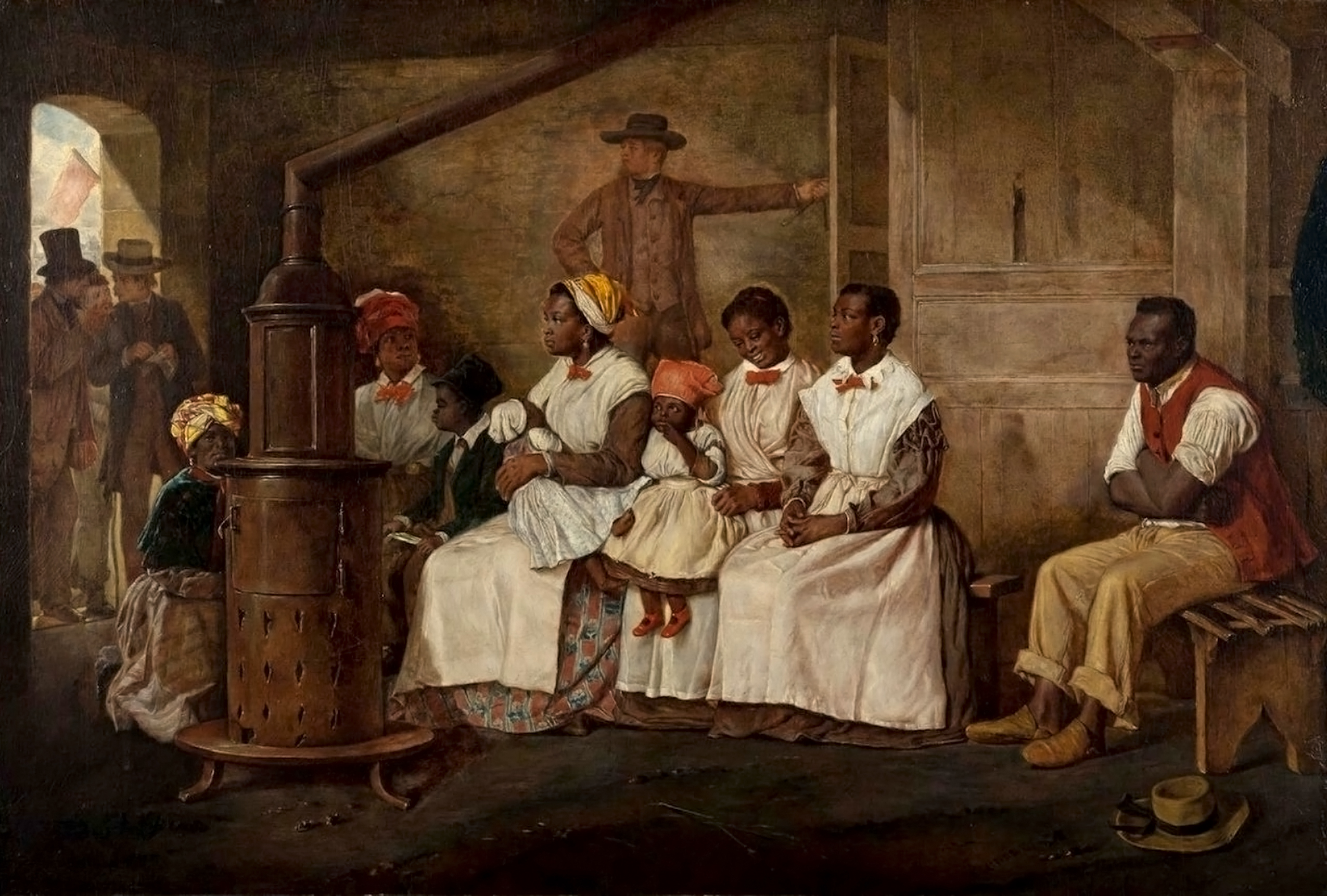
Early Years
To understand the early years of Richmond, there should always be an understanding of early America. In the Richmond area, the Native Americans lived in the area during the beginning. Until 1609, Parahunt (or the weroance of the Powhatan tribe. Weroance means commander of the tribe) had his main capital on a high hill overlooking the falls of the James Rivers. This was shown as the “king’s house” on the 1608 John Smith map. The Powhatan "proper" were one of the main constituent groups in the confederacy of the same name, and the river, in their language, was likewise known as the Powhatan. The village where Richmond is now also went by the name of Powhatan (transcribed by William Strachey as Paqwachowng), as well as Shocquohocan. Many British settlers came into Jamestown Island. A group of English people under Captain Christopher Newport traveled up the James River. The found the existence of an important site where Native Americans lives. They reached Turkey Island on May 22, 1607. The falls marked the western frontier of the confederacy with its enemies called the Siouan Moncoan tribe. Newport later became obsessed with the location. He had the idea to assist the Powahatans against the Siouan Monocan militarily. The next day, he was entertained by a weroance at Arrahatec, the explorers were visited by Parahunt, whom by his title (weroance Powhatan), they mistook for his father, the paramount Chief Powhatan (Wahunsunacawh, who actually resided at Werowocomoco).
Gabriel Archer wrote the fullest account of the visit to Parahunt’s village later that day. He also gave a vivid description of this inhabitation, which he called Pawatah’s Tower. He reported that there were 12 houses on the hill. There were various crops growing on the plain between the hill and the islands in the river (like wheat, beans, peas, tobacco, pumpkins, gourds, hemp, and flax). The islands were planted with maize, and had six or seven families living on them. After meeting with the two weroances while the women provided them strawberries and mulberries, the Englishmen decided to visit the nearby waterfalls, found they could pass no farther in their pinnace, and anchored for the night between the islands and the village. During the next day, Newport shared some of his ship’s provisions, pork and peas, with Parahunt. He learned what he could about local geography and politics from him. They wanted to go beyond the falls. Later, Parahunt agreed to meet with Newport there. He dissuaded Newport from going into Monacan county. Returning downriver, the Captain erected, on one of the islands, a cross reading Jacobus Rex, 1607, declaring the country to be the possession of James I of England; however, he told his guide, Navirans, that the cross signified an alliance between himself and the weroance of Powhatan. Meeting Parahunt one last time, Newport presented him with a gown and an English hatchet, and returned to Jamestown. The English didn’t visit the falls again for a year and a half.


Although, during this time, they continued attempting to negotiate with the paramount Chief Powhatan for an assault on the Monacans. After Newport’s return from England in September 1608, he unilaterally took a party of 120 soldiers to the falls. He explored the country beyond the falls. This upset Chief Powhatan and the natives at Powhatan village hid their corn. They refused to sell it. In September 1609, Powhatan’s people were in awe of Captain John Smith. John Smith was the then President of the colony. Smith felt that he can sent another force of 120 men under Francis West to settle the falls in a district called Rockett’s. Smith then came to West Fort and wanted to purchase the entire Native American village (which was about 3 miles from the fort) form Parahunt for an amount of cooper and an Englishman named Henry Spelman. The Powhatans didn’t fully like how the English were now in possession of their fortified town. Smith renamed it Nonsuch. They began to harass the settlers. People were forced to abandon the project and return to Jamestown. By the fall of 1610, Lord de la Warre (or West’s brother) made a second attempt to build a fort at the falls. It last all winter and it was then abandoned again.
After this, the English refused to settle any higher than Henricus or in modern Chesterfield County. This lasted from 1611 until the Native American massacre of 1622. Many Native Americans were murdered. After the Second Anglo-Powhatan War from 1644-1645, the Powhatan tribes signed a peace treaty in 1646 ceding the settlers all territory below the Fall Line, from the Blackwater River to the York River. At this time, the colony built Fort Charles at the falls of the James, near where the legal frontier was for over half a century. After two years, the site of Fort Charles was relocated to Manastoh on the South Side of the river (later known as Manchester, Virginia), where the ground was considered slightly more fertile. By 1656, many several hundred of Nahyssans and Mahocks (or Siouan groups) and Rechahecrians (possibly Erie) threatened both the Powhatans and the English by settling near the falls. A combined force of the English and Pamunkeys were sent to dislodge them in a bloody battle near Richmond. In that location, the Pamunkey weroance Totopotomoi was slain. Col. David Crawford, a Virginia Burgess from 1692-1694 owned much of the land in the latter 17th century that would become Richmond. Around 1699 or 1700, the Monacan had left their closest settlement called Mowhemencho, above the falls at Bernard's Creek — which was then repopulated with French Huguenot pioneers, to serve as a further buffer between the downriver English plantations and the native tribes. The name of the Huguenots' village survives today in that of the Richmond suburb of Manakin-Sabot, Virginia. In 1673, William Byrd I was granted lands on the James River. This included areas around Falls that would be later Richmond and it already included small settlements. Byrd was a well-connected trader with Native Americans in the area. He formed a fort on the site. William Byrd II inherited his father’s land in 1704.

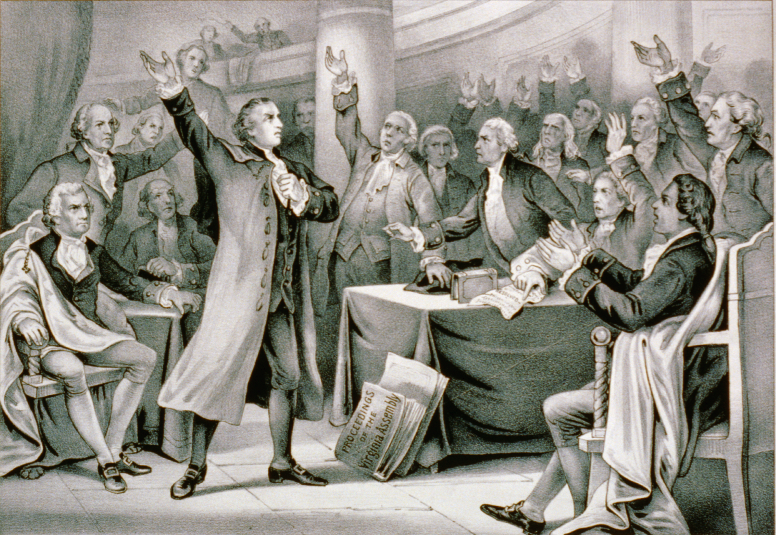
The Revolutionary War
During the early 18th century, the population of the Richmond area was below 200. The Virginia House of Burgesses passed the Warehouse Act of 1730. This required inspectors to grade tobacco at 40 different locations. This influenced the development at the Falls of the James. By 1737, William Mayo laid out the original street plan for the town of Richmond. The land was provided by Colonel William Byrd II of the nearby Westover Plantation. Mayo divided the town into four-lot thirty-two squares. Immediately outside of the town limits were larger plots of land that were to be sold as future sites for suburban villas. The name came from Richmond, England. By 1741, Henrico Parish Church (which is affiliated with the Church of England) was built in the present day neighborhood of Church Hill. Church Hill is the oldest neighborhood in the city. It overlooks downtown Richmond, Shockoe Bottom, and Shockoe Slip. The First Great Awakening impacted the area in the 1740’s too. The Great Awakening was a religious revival movement that wanted freer, independent expression of evangelism. Samuel Davies was sent from Pennsylvania in 1747 to lead and minister to religious dissenters in Hanover County, Virginia. He eventually helped found the first presbytery in Virginia (the Presbytery of Hanover), evangelized slaves (remarkable in its time, because most slaves didn’t believe in Christianity back then), and influenced young Patrick Henry who traveled with his mother to listen to sermons. Richmond was chartered as a town in 1742. By 1768, William Byrd III had squandered the family fortune and resorted to a public lottery to raise money for his debts. He auctioned off large lots of still-undeveloped Byrd family land in the Richmond region. By the 1770’s, the Revolutionary War developed. The Revolutionary War was about some colonists wanting independence from the British Empire.
In 1775, Patrick Henry (who opposed the Crown) delivered his famous “Give Me Liberty or Give Me Death” speech in St. John’s Church during the Second Virginia Convention. The speech convinced many members of the House of Burgesses to pass a resolution to deliver Virginia troops to the American Revolutionary War. A year later, the Continental Congress adopted the Declaration of Independence. The Declaration of Independence wasn’t part of the Constitution, but it was a total declaration of opposition to the British in seeking a new country. Virginia’s state capital was moved from Williamsburg to Richmond in 1780. In 1781, under the command of Benedict Arnold, Richmond and its port at Warwick was burned by British troops. Yet Richmond shortly recovered, and, in May 1782, was incorporated as a city. In 1785, the James River Company was formed with George Washington as its honorary president. The James River and the Kanawha Canal was designed by Washington. Thomas Jefferson designed the cornerstone of the Virginia State Capitol in 1785 too. The city of Richmond’s economy grew. The first bridge across the James River, called the Mayo’s Bridge (after the founder of the city) was built in 1787. Thomas Jefferson wrote the Virginia Statue for Religious Freedom in 1779. It was passed in Richmond on January 16, 1786. It has been recognized every year by the President of the United States with January 16 established as National Religious Freedom Day. The principles of religious freedom and the separation of church and state have been promoted in Virginia for a long time. From 1785–1787, the oldest Masonic Hall in America still in continuous use was constructed on Franklin Street between 18th and 19th Streets in downtown Richmond. The Bill of Rights was instated in the Constitution one year later, in 1787.

The Antebellum Period
The antebellum period in Richmond, Virginia was filled with the institution of slavery and many people in Richmond were also fighting the evil of slavery. The issue of slavery shaped many local issues. Shockoe Bottom was a location where slave trading existed. It is believed that from 1800 to 1865, about 300,000 slaves were sent from Shockoe Bottom to work in the Deep South. Shockoe Bottom may have served as a burial ground for Africans. Although, a map created in circa 1825 showed an African burial ground next to the Richmond “Poor House.” After the Haitian Revolution of the late 18th century, slave-owners were faced with the prospect of similar slavery uprisings in the American British Colonies and later in the early American nation. There was the failed major uprising called Gabriel Prosser’s Rebellion. It happened near Richmond in 1800. The uprising was rumored to have involved 1,000 to 4,000 Africans living in the Richmond area. Gabriel Prosser was a heroic black man who wanted slavery to end and justice to be established for black people. The rebellion failed, but the cause of freedom continued. By the start of the 19th century, the city’s population reached 5,730 people. Congress also passed a law prohibiting the African Slave Trade in 1808. Several other important events took place in Richmond during the early 19th century. There was the designation of Jefferson, Madison, and Monroe as Richmond’s first political districts in 1803. The charter of the Bank of Virginia or the city’s first bank was signed in 1804. In 1806, there was the first public library in Richmond, which was established by the Library Society of Richmond. The first stagecoach lines to Richmond were formed during the War of 1812. The first regular steamboat service started on the James River in 1815.
In 1816, the first City Hall of Richmond was built. By the 1830’s, the Industrial Revolution arrived in Richmond. In 1831, the Chesterfield Railroad Company opened its horse-drawn rail line between Manchester and Chesterfield coal mines, which was just south of the city. By 1833, Rhys Davies (who was an engineer from Tredegar, South Wales) was hired by Richmond businessmen and industrialists to construct furnaces and rolling mills used in the iron and foundry business. By 1837, the rolling mills were merged with the Virginia Foundry. This formed the Tredegar Iron Works. That was the largest foundry in the South and the third-largest one in the United States. The first steam locomotive service to the city began with the Richmond, Fredericksburg and Potomac Railroad in 1836. Other railroads followed. They included: the Richmond and Danville Railroad was chartered in 1847, and completed the circuit to Danville, Virginia by 1854. In 1838, the Medical College of Virginia was founded in the city. Besides transportation and industry, antebellum Richmond was also the center of regional communications, with several newspapers and book publishers, including John Warrock, helping shape public opinion and further the education of the populace. The aversion to the slave trade was growing by the mid-19th century, and in 1848, Henry "Box" Brown made history by having himself nailed into a small box and shipped from Richmond to Philadelphia, Pennsylvania, escaping slavery to experience freedom. Richmond was a vital part of the Underground Railroad where people traveled from Richmond into the North (and in some cases, further north into Canada).

The Civil War
Richmond, Virginia has a key role in the Civil War. By February 1861, Jefferson Davis was inaugurated as President of the Confederate States of America in Montgomery, Alabama. 2 months after he was inaugurated, the Confederate army unjustly fired on Fort Sumter preemptively in Charleston, South Carolina. The Civil War immediately began. During the outbreak of war, followed by Virginia’s secession in May of 1861, the strategic location of the Tredegar Iron Works was one of the main factors in the decision to relocate the capital of the Confederacy to Richmond. From this arsenal came much of the Confederates’ heavy ordnance machinery making 723 tons of armor plating that covered the CSS Virginia, the world’s first ironclad used in the 2-day Battle of Hampton Roads in March 1862, against the USS Monitor. In 1862, the Peninsula Campaign was led by General George B. McClellan. This was a Union attempt to take Richmond. It started from the Union held Fort Monroe at the eastern tip of the Virginia Peninsula at Old Point Comfort. Efforts to take Richmond by the James River were successfully blocked by Confederate defenses at Drewry’s Bluff. That is about 8 miles downstream from Richmond. The Union marched up the Peninsula by land. This action culminated in the Seven Days Battles. Ruses to make the defending forces seem larger by General John B. Magruder, Richmond’s defensive line of batteries and fortifications set up under General Robert E. Lee, which was a daring ride around the Union Army by Confederate cavalry under General J.E.B. Stuart.
There was an unexpected appearance of General Stonewall Jackson’s famous “foot cavalry” combined to unnerve the ever cautious McClellan, and he initiated a Union retreat before Richmond. Even as many parts of the South were falling, the failure of the Peninsula Campaign to take Richmond early in the war had to almost take three years of bitter plus bloody warfare between the states. By April 2, 1863, Richmond experienced a large bread riot. Housewives could no longer afford very high food prices and broke into stories. The militia was called out. A long siege came about by Union General Ulysses S. Grant. He captured nearby Petersburg in April 1865. As the fall of Petersburg became imminent, on Evacuation Sunday (April 2), Jefferson Davis, his cabinet, and the Confederate defenders abandoned Richmond. They fled south on the last open railroad line. That line was in Richmond and Danville. The retreating Confederate soldiers received orders to set fire to bridges, the Armory, and warehouses as they left. The fires then spread out of control. It destroyed large parts of the city. It reached to the very edge of Capitol Square mostly unchecked. By dawn, Richmond’s mayor and other civilians went to the Union lines east of Richmond on New Market Road (now State Route 5) and surrendered the city. Union troops entered and eventually quenched the flames. On April 4, 1865, President Abraham Lincoln toured the fallen city of Richmond by foot with his young son Tad. He visited the former White House of the Confederacy and the Virginia State Capitol. He arrived as fires were set by the retreating Confederates still smoldered, Lincoln went to the White House of the Confederacy, expecting a communication from the retreating forces.
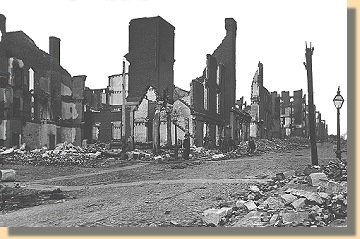
Some want him to make a public gesture of sitting at Jefferson Davis’s own desk. This would symbolize to the nation that the President of the United States held authority over all of the land. Citizens and freed slaves greeted Lincoln as a conquering hero. Lincoln wanted the Confederates to be welcomed back into the Union as soon as possible. During this time, the governor and top officials relocated briefly to Danville, Virginia. About a week after Richmond’s evacuation, Robert E. Lee surrendered to Grant, ending at the Battle of Appomattox Courthouse. Within the same week, on April 14, 1865, President Abraham Lincoln was assassinated at Ford’s Theater in Washington, D.C. by John Wilkes Booth. Northern leaders would deal much more harshly with the former Confederate states than Lincoln had planned. On May 25, 1865, Francis Harrison Pierpont of Fairmont, West Virginia, moved the seat of government of restored Virginia from Alexandria back to Richmond. The Virginia General Assembly was once again located in the State House in Richmond. During the President Andrew Jackson administration, Governor Pierpont was replaced as Governor on April 4, 1868 by General Henry H. Wells of New York. He was formerly under the command of General Brever Major General John Schofield. Pierpont and his family returned home to Fairmont. After the Civil War, Reconstruction would exist.
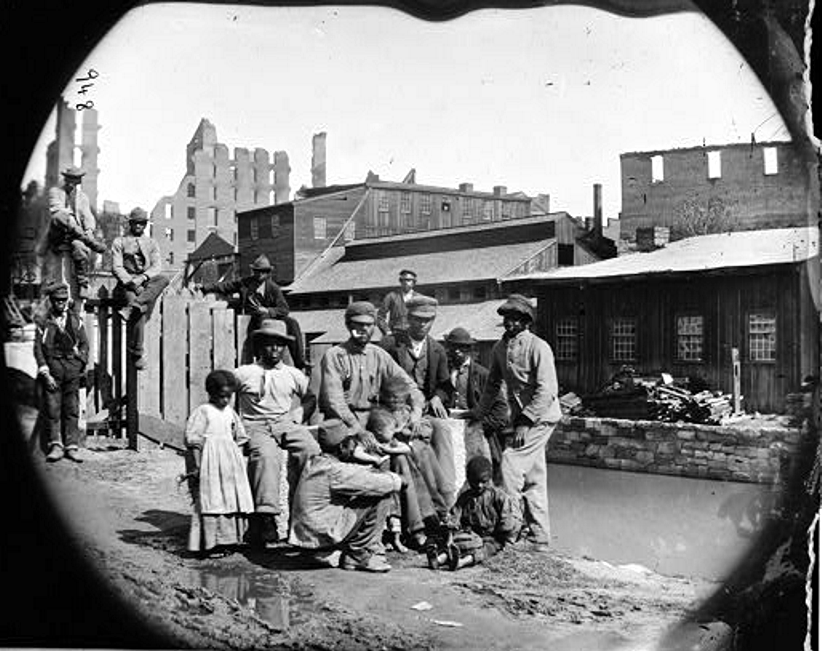
Reconstruction and City Growth
By 1865, the Thirteenth Amendment to the United States Constitution abolished slavery. Richmond experienced Reconstruction in unique ways. Richmond’s Theological School for Freedmen later becoming Virginia Union University was established in 1865. Today, the historic campus is located on Lombardy Street just north of the downtown area. In 1866, the first organized Memorial Day was celebrated in Richmond at Oakwood Cemetery near Church Hill on the Nine Mile Road. Many Confederate troops who have died were buried there. That was at Hollywood Cemetery just west of the Tredegar Iron Works in Richmond. In 1869, Richmond’s segregated public school system was started. Black voters registered in the city’s first municipal election since the end of the Civil War. One year later, Virginia was readmitted to the Union. It had a new Constitution and federal troops were removed from the city by 1870.
1870 in Richmond has been called The Year of Disasters. That was the worst flood in 100 years. An overcrowding during a court hearing over Richmond’s elections collapsed the third floor of the Virginia State Capitol. It caused it to fall into the Hall of the House of Delegates. This killed 60 people and injured 250. There was the Spotswood Hotel Fire that killed 8 people. During the next decade, the city’s first high school called Richmond High School opened in 1873. Cigarette manufacturing was introduced in Richmond by P.H. Mayo & Bros. Tobacco Co. in 1874, further expanding the city's economic importance to the tobacco industry. The last federal troops were removed from the South in 1877, and Reconstruction ended. Virginia experienced power struggles during the 1870’s and the 1880’s. Conservatives were split over the repayment of the state’s pre-war debt. The “Funders” wanted the full amount to be paid. Much of which was held by the Northern interests being a reality. The Readjusters wanted a portion to be paid by the new State of West Virginia and formed the Readjuster Party. This was a coalition of Republicans, conservative Democrats, and free black people led by railroad executive William Mahone. Mahone was elected to the U.S. Senate where he served from 1881 to 1887. The Readjuster’s candidate William E. Cameron was elected as Virginia’s governor. He served from 1882 to 1896. By 1883, the Democrats were assuming power in state politics. They held it for about 80 years. Then came the fall of the Byrd Organization in the late 1960’s, following the death of the former Governor and U.S. Senator Harry F. Byrd in 1966.
By 1880, the population of Richmond, Virginia reached 60,600. The James River and the Kanawha Canal closed with tracks of the Richmond and Allegheny Railroad of Major James H. Dooley laid on its towpath. In 1885, the Robert E. Lee Camp Soldiers Home for Confederate Veterans opened. Monument Avenue was laid out in 1890. Over the next decades, that area would be gathered with many sick monuments that disgracefully show the city’s Confederate traitors like J.E.B. Stuart, Robert E. Lee, Jefferson Davis, Stonewall Jackson, and Matthew F. Maury. (The western-most monument, honoring Richmond native and tennis star Arthur Ashe, was added in 1996). Richmond is known to have the first successful electrically powered trolley system in America. IT was designed by electric power pioneer Frank J. Sprague. The trolley system was opened for the first time in January of 1888. Richmond’s hills or a long transportation obstacle, were considered an ideal proving ground. This new technology soon replaced horsecars. This became a nation trend. By the late 19th century and the early 20th century, the electrically powered street railway systems accelerated Richmond’s expansion. To generate traffic and fuel sales of property, amusement parks were created at the end of the lines at Lakeside Park, Westhampton Park (now the University of Richmond), and Forest Hill Park. The Richmond area’s streetcar suburbs included Highland Park, Barton Heights, Ginter Park, Woodland Heights, and Highland Springs. Rails of interurban streetcar services formed a suburban network from Richmond extending north to Ashland and south to Chester, Colonial Heights, Petersburg, and Hopewell. Another interurban route ran east along the Nine Mile Road and terminated in the National Cemetery at Seven Pines at the end of the Nine Mile Road. This was where many Union Civil War dead were interred. Electrically powered trolleybuses also using Sprague technology operated later in a local service in nearby Petersburg for several years. During this time, many of Richmond’s inner city neighborhoods started to grow rapidly, such as the Fan District and Church Hill.
In 1894, a new City Hall was built in Victorian Gothic style. The building, now called the “Old City Hall,” is located just north of Capitol Square near the statue of Dr. Hunter Holmes McGuire. It is across the Broad Street from the current Richmond City Hall, which was built in 1971. In 1896, the United States Supreme Court ruled in Plessy v. Ferguson that “separate but equal” laws didn’t deprive black people of civil rights guaranteed under the Fourteenth Amendment. The Confederate Museum opened and the National Confederate Reunion (the first of five) was held in Richmond. One year later the Richmond Chapter of the United Daughters of the Confederacy was established. The end of the 19th century ended where Confederate traitors had a museum and black people continued to fight for justice in Richmond.
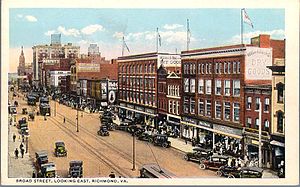

The image on the right shows Emancipation Day being celebrated in Richmond, VA in ca. 1905 (on Main Street).
The early 20th century
By 1900, Richmond’s population grew to 85,050 people. There was the theater mogul Jake Wells. He built many vaudeville theaters and opera houses in Richmond during the early 20th century. There were other theater and opera houses which started to open on what became “Theater Row.” They included The Bijou, the Colonial Theater, and The Lyric Opera House. In 1903, the African American businesswoman and financier Maggie L. Walker chartered St. Luke Penny Savings Bank. She served as its first President. She was the first woman (of any race) bank President of America. Today, the bank is called Consolidated Bank and Trust Company. It is the oldest surviving African American bank in the United States. For over 250 years, the James River divided Richmond on the north bank from its sister, independent city of Manchester. It is located on the south bank. There was the issue of toll bridges over the James River among the Manchester and Richmond residents. By 1910, Manchester agreed to a political consolidation with the much larger independent city of Richmond. Richmond's better-known name was used for both areas as it contained the location of Virginia's state capital. Key features of the consolidation agreement were requirements that a "free bridge" across the James River and a separate courthouse in Manchester be maintained indefinitely. Instead of a barrier between neighboring cities, under the consolidation the James River became the centerpiece of the expanded Richmond. Although Manchester is now defunct as an independent city, vestiges of the name can be found in the Manchester Bridge, Manchester Slave Trail, and the Manchester Courthouse. In 1914, Richmond was the headquarters of the Fifth District of the Federal Reserve Bank. It was selected, because of the city’s geographic location. It was the place with importance as a commercial and financial center. It has transportation and communication facilities. Virginia had a leading regional role in the banking business. The bank was originally located near the federal courts downtown and moved to a new headquarters building near the Capitol in 1922 (today the Supreme Court of Virginia building), and finally to its present location overlooking the James River in 1978.
In 1919, (or at the end of World War I), Philip Morris was established in the city. Richmond was in the broadcasting era by late 1925 when WRVA (or known originally as Edgeworth Tobacco Station and owned by Larus & Brothers) went on air. There were white ballad singers and black gospel quartets who were popular on the radio during that time. Richmond back then knew of its southern roots. Entertainment locations grew in Richmond by the 1920’s. In 1926, the Mosque (now called the Altria Theater) was constructed by the Shriners as their Acca Temple Shrine, and since then, many of America's greatest entertainers have appeared on its stage beneath its towering minarets and desert murals. Loew's Theater was built in 1927, and was described as, "the ultimate in 1920s movie palace fantasy design." It later suffered a decline in popularity as the movie-going population moved to the suburbs, but was restored during the 1980's and renamed as the Carpenter Center for the Performing Arts. In 1928, the Byrd Theater was built by local architect Fred Bishop on Westhampton Avenue (now called Cary Street) in a residential area of the city. To this day, the Byrd remains in operation as one of the last of the great movie palaces of the 1920's and 1930's. In 1926, the Carillon in Byrd Park was constructed as a memorial to the World War I dead. The Carillon still towers above Byrd Park in the city. In 1927, the dedication of Byrd Airfield (now Richmond International Airport) included a visit by Charles Lindbergh. The airport was named after Richard E. Byrd, the famous American polar explorer. The John Marshall Hotel opened its doors in October 1929.

The Great Depression and WWII
The tobacco industry grew. This was the industry that helped Richmond recover from the Great Depression. Within 5 years, Richmond’s economy bounced back. Richmond attracted businesses relocating from other parts of the country as one of the northernmost cities of the right to work states. The population of the city had grown to 255,426 by 1936, and the value of new construction to the region was 250% over that of 1935. By 1938, Reynolds Metals moved its executive office from New York City to Richmond. By the end of World War II in 1945, more than 350,000,000 pounds of war supplies were being shipped through the Defense General Supply Center, located nine miles (14 km) south of the city. 1946 marked a crucial turning point for Richmond’s economy. During that year, the highest level of business activity was recorded in the history of the city. Within one year, Richmond was the fastest growing industrial center in the United States.
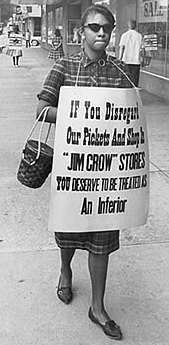

Post war Richmond
From 1945 to 1960, Richmond continued to grow. In 1948, Oliver Hill was the first black person elected to the city council of Richmond since the Reconstruction era. In 1948, WTVR-TV or the south’s “first television station” existed to broadcast in Richmond. Roads improved in the early 20th century. Streetcars soon disappeared after World War II as they couldn’t compete with automobiles and buses. The Richmond-Petersburg area's interurban services were gone by 1939. The last streetcars ran in 1949 on the Highland Park line when they were replaced by buses. The National Auto Trails system grew into a national network of highways. The area was served by the Davis Memorial Highway or the busy north-south corridor in central Virginia shared by U.S. 1 and U.S. Route 301 through the cities of Richmond, Colonial Heights, and Petersburg. It crossed the James River on the Robert E. Lee Memorial Bridge. After World War II, with only four traffic lanes and long stretches of undivided roadway, the Jefferson Davis Memorial Highway became a major area of traffic congestion, as well as the site of occasional spectacular and deadly head-on collisions. The 1952, the Wilton House museum opened up. In 1954, Davis v. County School Board of Prince Edward County is decided as part of the 1954 Brown v. Board of Education ruling (officially overturned racial segregation in U.S. public schools).
The Davis case was the work of Richmond civil rights attorneys Oliver Hill and Spottswood William Robinson III who took on the state's law firm of Hunton, Williams, Gay, Powell and Gibson, also based in Richmond. In 1955, VMFA, under the leadership of Leslie Cheek Jr, constructs a 500-seat proscenium stage known as the "Virginia Museum Theater" to feature the arts of drama, acting, design, music, and dance alongside the static arts of the galleries. In 1955, prior to the creation of the U.S. Interstate Highway System, the Virginia General Assembly created the Richmond-Petersburg Turnpike Authority as a state agency to administer the new Turnpike of the same name. The new toll road was planned with only 15 exits, and most of these were well away from the highly developed commercial areas along parallel U.S. 301. Following the 1954 Brown v. Board of Education ruling the Byrd Organization (in 1956) passed the Stanley plan to advance Massive resistance policy of segregated schools. Some of the intellectual framework for these laws was due to forceful editorials from Richmond News Leader editor James J. Kilpatrick. Effects of these policies would affect the Richmond area for years, especially in rural areas like New Kent and Prince Edward County. The Richmond-Petersburg Turnpike opened in 1958, and soon was granted the Interstate 95 designation in the Richmond area, splitting into Interstates 85 and 95 at Petersburg.


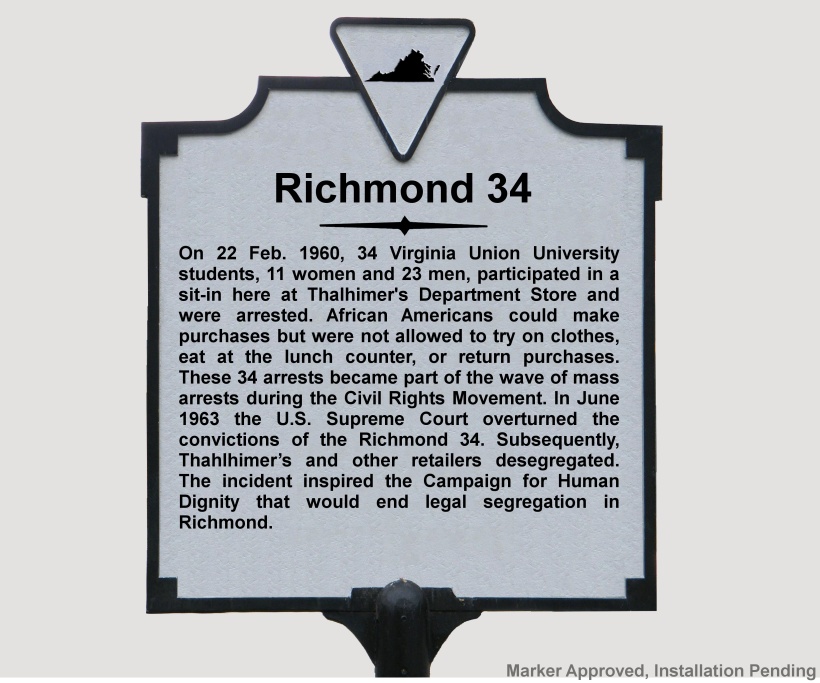
The Richmond, VA Civil Rights Movement
Richmond has a long African American historical legacy. Black people lived in Richmond for centuries. Kathleen Kirkpatrick is the executive director of the Capitol Square Preservation Council. She researched information about how black slaves were used in building the State Capitol in Richmond. There was a slave revolt in about 1800. It was led by Gabriel Prosser. He lived near the Richmond area. He was captured and killed on October 10, 1800 at the age of 24. Richmond was a major center of the U.S. slave trade. Many slave owners would kidnap slaves from Virginia plantations and sell people in Richmond while developing new plantations in the Deep South. Many Richmond slaves worked in domestic actions. There were auxiliary buildings that served as separate locations for slaves. Locations of where slaves existed are found in John’s Church Historic District and the Shockoe Valley and Tobacco Row Historic District. Many slaves were forced to work at the Tredegar Iron Works and other iron foundries. Many worked in Richmond’s tobacco’s industry. They used hand labor to stem tobacco leaves and made plugs of chewing tobacco. From 1785 to the Civil War, African Americans and Irish immigrants helped to form the James River and Kanawha Canal. Many slave and free black people navigated cargoes into Richmond and into the Allegheny Mountains in Western Virginia.
Burial Associations were formed like the Barton Heights Cemeteries. African American churches and burial associations were created by both slave and free black people before the Civil War. Some of the survival ones are the Third Street Bethel African Methodist Episcopal Church and the Ebenezer Baptist Church in the Jackson Ward Historic District. They date from the 1850’s. Many free black people in Richmond owned property and homes in antebellum Richmond. They included the Miller House in the Oregon Hill Historic District and Adams House in the Jackson Ward Historic District. After the Civil War, the black population in Richmond grew. Black people by the late 1800’s developed a massive amount of housing. Jackson Ward and Carver Residential Historic District were places were black housing existed back then. Many houses like the Quality Row on 100 block of East Leigh Street were many notable African Americans lived. There was the Maggie L. Walker House too. The Sixth Mount Zion Baptist Church was founded in 1867 John Jasper, a former slave who went on to have a long career in the pulpit. The church has its own museum which shows its history and the legacy of John Jasper. The black community grew in the Jackson ward Historic District too by the early 1900’s. During that time, fraternal organizations developed like the True Reformers and the Order of St. Luke. Virginia Union University was an educational facility used by African Americans back then. Richmond’s black architects like John Lankford and Charles Russell developed homes, churches, and commercial buildings. Richmond had zoned neighborhoods racially.
Later, the Supreme Court ruled that zoning law unconstitutional, so racists used private covenants to restrict the housing rights of African Americans. Private, restrict covenants in many cased prohibited selling homes to black people, Jewish people etc. Even the federal government used redlining of public housing, urban renewal, highway construction, etc. which harmed the economic development projects of black people in Richmond. It displaced thousands of low income black people and forced them to live in East End Richmond with many public housing. Redlining and blockbusting (a term for the business practice of encouraging whites to sell simply by implying that racial minorities are moving into the neighborhood, was employed) harmed many areas. More whites lived in the suburbs like Henrico County including Chesterfield, and the black population in Richmond increased. Richmond is a mostly black city and there is nothing wrong with that. History and studies prove that improvement in any society requires a holistic approach using education, addressing economic inequality, addressing racial discrimination, investments in housing, and progressive addressing of social conditions in order for people to achieve their own pursuit of happiness. Jackson Ward was also a place where free black people and enslaved black human beings. It was an epidemic of African American business and entertainment in Richmond.
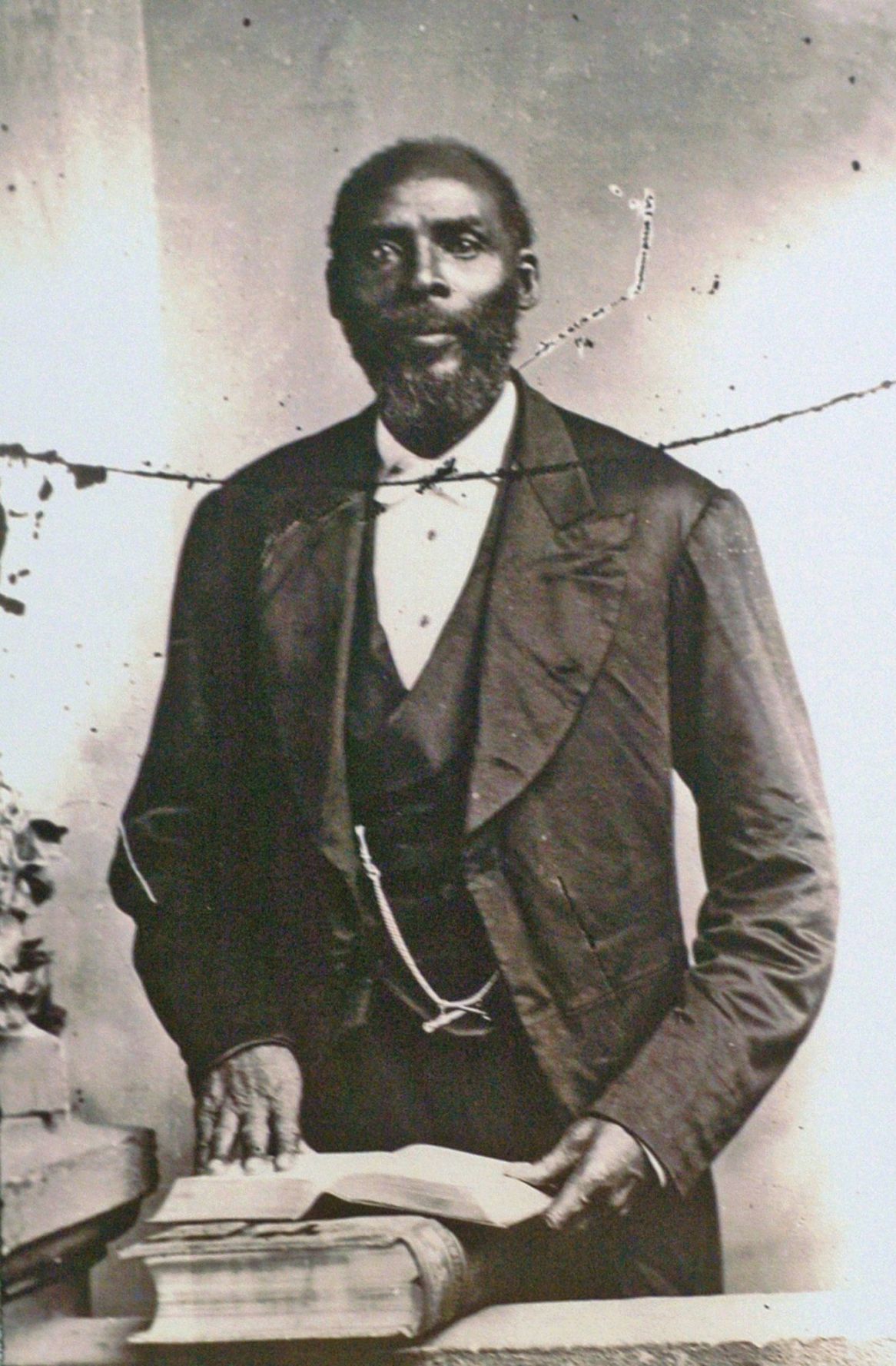


Black people experienced Jim Crow apartheid and later the Civil Rights movement had a long history in Richmond, Virginia. One civil rights leader was the civil rights lawyer Oliver Hill. He was born in Richmond. Also, he was involved in the Brown vs. Board of Education case. This Supreme Court case desegregated public schools in America. His son Oliver Hill Jr. continued to promote his father’s legacy. Spottswood William Robinson III was another educator, civil rights attorney, and federal judge who believed in civil rights too. He was born in Richmond. In the early 1950s, Robinson and his law-partner Oliver Hill litigated several civil rights lawsuits in Virginia. In 1951, Robinson and Hill took up the cause of the American students at the segregated R.R. Moton High Schoolin Farmville, Virginia who had walked out of their dilapidated school. He worked to cause the Brown v. Board of Education decision too. In 1966, Robinson was appointed by President Lyndon B. Johnson to the United States Court of Appeals for the District of Columbia Circuit, the first African-American so appointed and, later, became the first African-American to serve as chief judge of the District of Columbia Circuit. Robinson was a member of the NAACP too. He lived to be 82 as he lived from 1916 to 1998. During the early 1960’s, there were sit ins nationwide which wanted to end segregation in public facilities.
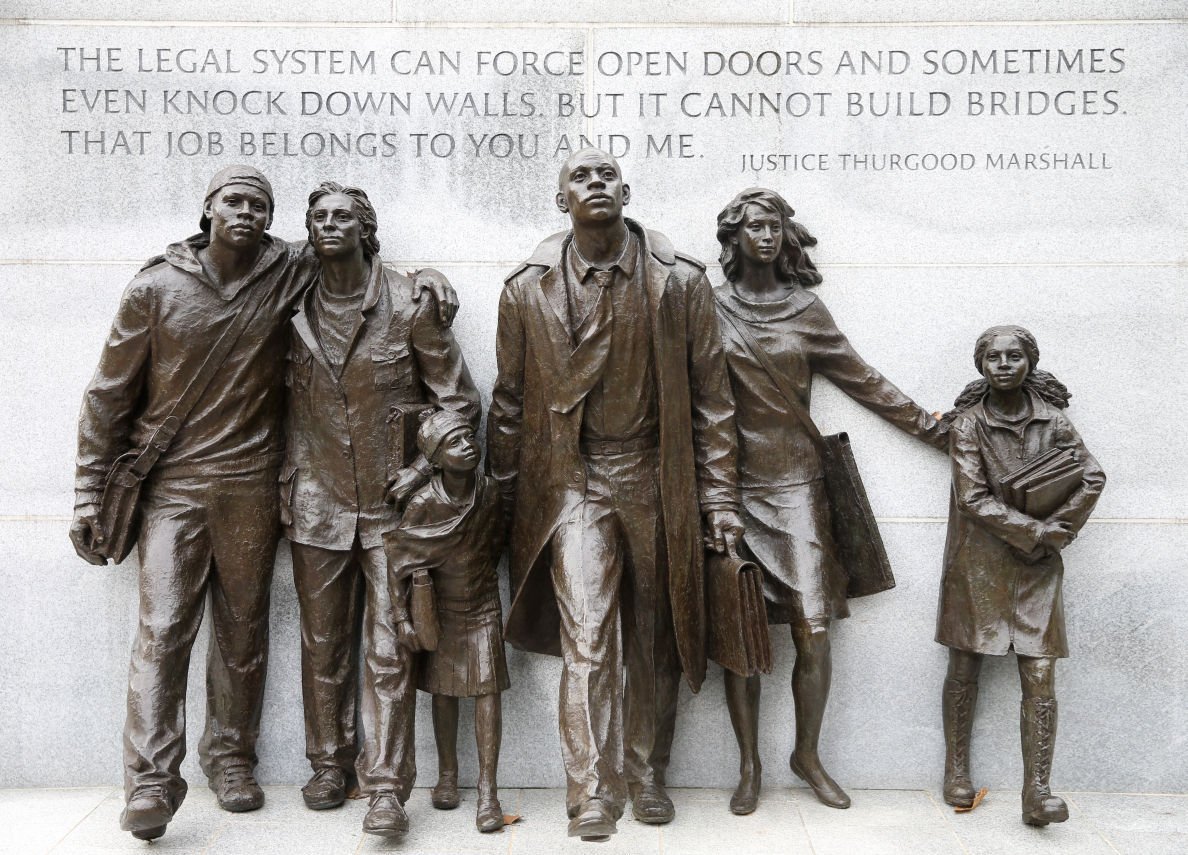
This is the Virginia Civil Rights Memorial in Richmond, Virginia. It celebrated the people who fought for social equality in Virginia. It is found on the Virginia Capitol west of the Executive Mansion. It celebrated people like Barbara Johns, who led a walkout of the all-black Robert Russa Moton School in Prince Edward County. Also, it remembers Oliver W. Hill Sr. and Spottswood W. Robinson III, the NAACP lawyers whose work helped the case become part of the Supreme Court’s Brown v. Board of Education decision that ended the “separate but equal” approach to public education.
The Richmond 34 was a group of Virginia Union University students who were involved in nonviolent sit-ins at the lunch counter of Thalhimers department store in downtown Richmond, Virginia. This allowed the desegregation of the city of Richmond. Downtown Richmond was once segregated. African Americans could buy clothes in department stores, but they were not allowed to try them on or return them. Many stores didn’t serve black people and they were segregated. On the morning of February 22, 1960, 34 students from Virginia Union University went down to Thalhimer’s Department Store located in the heart of downtown Richmond. The students then proceeded to walk into the department store and sit at the whites only lunch counter and demanded to be served. The students were then asked to leave, and when they failed to do so, were arrested and charged with trespassing. They were taken to jail, but released on bail. They were convicted, but the Richmond 34 appealed to the Virginia Supreme Court and the U.S. Supreme Court later. Their convictions were finally overturned in 1963. These innocent young people made a victory for the Civil Rights movement in America. Black people organized picket lines and boycotts against segregated stores. The stores were finally segregated. One protestor was Leroy Bray. In 1963, William Thalhimer Jr. was asked by President John F. Kennedy to come to Washington to consult with him before he sent his civil rights bill to Congress. There was a remembrance of the Richmond 34 in 2010 after 50 years. There is a mile market in downtown Richmond which marked where the Thalhimers once stood. Filmmaker Brian Bullock is the owner of the documentary film company Bundy Films and a Virginia Union University alumnus. He made a documentary film about the Richmond 34 sit-in event called, “The Richmond 34.” It showed the information about the protesters, William B. Thalhimer, and the local people in Richmond.
Many people in the documentary talked about their experiences and how Dr. King spoke in Richmond about equality. The sit-in lasted from February 20-23, 1960. When the Richmond 34 left jail, a crowd cheered them. Their actions lead to the passage of the Civil Rights Act of 1964 which bans discrimination based on race involving public restaurants. Many names of the Richmond 34 were Elizabeth Patricia Johnson, Joanna Hinton, Gloria C. Collin, Patricia A. Washington, Barbara A. Thorton, Lois B. White, Thelma Yvonne Hickmon, Celia E. Jones, Ford Tucker Johnson Jr., Ronald B. Smith, Larry Pridgen, etc. Back then, Richmond schools were segregated by law. Senator Byrd (who was a far right conservative from Virginia) supported Massive Resistance or preventing black people to go into desegregated schools. Later, Governor Lindsay Almond closed down Virginia schools in refusing to enforce desegregation policies. By the 1960’s, schools were opened to all. Title VI of the Civil Rights Act of 1964, and the Elementary and Secondary Education Act of 1965 denied federal funds to schools determined to be resisting integration. This resulted in a bit more compliance by Virginia schools. The backlash against this was white flight or white people going into private schools, moving to the suburbs, and other actions. By the 1970’s, busing is limited in Richmond. Desegregation of U.S. public school peaks by the year of 1988. Today, schools in the North and the South are more segregated based upon race and class. Social movements have been in Richmond for years from the NOI to civil rights organizations. Richmond has been through much progress, but much more is needed. Today, the Black Lives Matter movement exists in Richmond. The Richmond Peace Education Center (since the 1980’s) continues to fight for a more peaceful world where social justice exists for humanity.


The Modern City
New Developments came from 1960 to the year of 2000. Richmond had natural gas in 1950. Energy demands were desired to be met. By 1952, cigarettes production reached an all-time high for Richmond at 110 billion per year. There was the huge downtown boom from 1963 to 1965. This came to cause the construction of more than 700 buildings in the city. By 1968, Virginia Commonwealth University was created by the merger of the Medical College of Virginia with the Richmond Professional Institute. The Richmond Coliseum opened in 1971. In 1972, Richmond experienced severe flooding. Hurricane Agnes dumped 16 inches of rain on central Virginia. The rain flooded the James River to 6.5 feet. This was over the original 200 year old record. In 1984, Richmond completed the Diamond ballpark and the Richmond Braves or an AAA baseball team, was created for the Atlanta Braves. The Richmond Braves started to play in that year. In 1985, Richmond saw the opening of the 6th Street Marketplace. This is a downtown festival marketplace which was a solution to the downtown area’s urban erosion. The project did fail and the shopping center was closed and demolished in 2004. In 1990, Richmond native L. Douglas Wilder (the grandson of slaves) was sworn in as Governor of Virginia. Douglas Wilder was the first elected African American governor of any state in United States history. In 1995, a multimillion dollar floodwall was complete. This was down to protect the city and the Shockoe Bottom businesses from the rising waters of the James River. Also during 1995, a statue of Richmond native and tennis star Arthur Ashe was added to the famed series of statues on Monument Avenue. Notwithstanding objections of purists in the country, Ashe was added to a group of statues that previously had consisted primarily of prominent Confederate military figures (we know that the Confederacy was heinous and evil), as a sign of the changing nature of the city's population. Richmond continued to grow well into the 21st century.
_from_Libby_Hill_Park_June_2012_(7433867610).jpg)
The 21st Century
By the 21st century, Richmond, Virginia experienced massive changes. The population of the greater Richmond metropolitan area reached about 1,100,000 people. The city itself for a time declined into less than 200,000. By 2017, the city has grown in its population into about 223,170 people. The floodwall downtown was expanded. There has been more development of the riverfront stretching along the James River from the historic Tredegar Iron Works site, just west of 7th Street, to 17th Street downtown. Recent renovations included the rebuilt James River and Kanawha Canal and Haxall Canal, now designed as a Canal Walk. The riverfront project has brought this 1.25-mile (2.01 km) corridor back to life, with trendy loft apartments, restaurants, shops and hotels winding along the Canal Walk, along with canal boat cruises and walking tours. The National Park Service’s Richmond Civil War Visitor Center, in the Tredegar Iron Works, brought three floors of exhibits and artifacts, films, a bookstore, picnic areas and more. Virginia Commonwealth University has also been aggressively developing its campuses downtown, with the new Stuart C. Siegel Center athletic complex, and RAMZ apartments. In 2002, the new, expanded Greater Richmond Convention Center opened for business. It contained more than 600,000 square feet (60,000 m2). The convention center, located in the heart of downtown Richmond, is the largest of its kind in the state. Renovation continues in the historic neighborhood of Jackson Ward, to bring the neighborhood off the National Trust Historic Preservation’s list of one of America’s most endangered historic places. Jackson Ward is about 40 blocks. It has been called “Black Wall Street” and the “Harlem of the South” during the 19th century.
Restaurants like Croaker’s Sport and attractions like the Black History Museum and Cultural Center makes Richmond one of the most culturally significant stops for visitors in the area. On September 19, 2003, Hurricane Isabel had sustained winds of 40-60 mph. It caused major power outages in the Richmond area. On September 2004, Tropical Storm Gaston swept through the area too. It gave intense rain in the area. Flooding existed in the Shockoe bottom business district. Electoral outages were all over the metropolitan area. On August 31, 2004, the Shockoe Bottom district was devastated by flooding brought on by torrential rains from the remnants of Tropical Storm Gaston. The storm lingered over the Richmond area, dumping nearly 12 inches (300 mm) of rain in the Shockoe Bottom watershed which then backed up behind the James River flood wall. A 20-block area, including most of Shockoe Bottom, was declared uninhabitable in the wake of the flood. The "Bottom" has recovered as a major restaurant and night club district after changes to the area's sewage system were made to prevent a re-occurrence. On November 2, 2004, history was made. Former Virginia governor L. Douglas Wilder was elected as Richmond’s first directly elected mayor in over 60 years. In 2008, AAA baseball Richmond Braves left Richmond for Gwinnett County, Georgia, due to the lack of agreement from Richmond area governments to finance the construction of a new ballpark. They were replaced in 2010 with the Richmond Flying Squirrels, the Double-A affiliate of the San Francisco Giants. In the 2010 census the population in Richmond finally grew for the first time in 40 years due to revitalization of places like Shockoe bottom, and rapid gentrification of neighborhoods like The Fan and The Museum District, Church Hill, Jackson Ward, and in more recent years, Manchester. Obviously, I don't agree with excessive gentrification. Richmond is a city on the move. In 2017, Richmond continues to be a great city of Virginia.


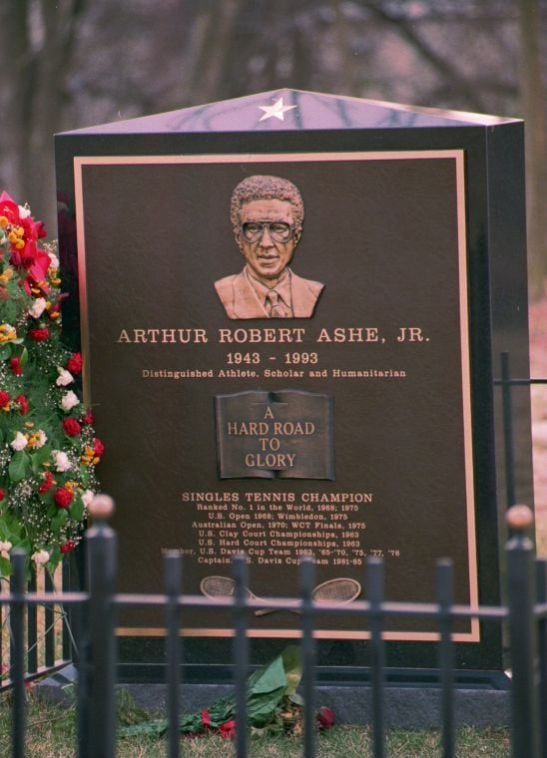
The Culture of Richmond
Richmond is filled with tons of culture. It is home to many large museums and art locations. The Virginia Historical Society and the Virginia Museum of Fine Arts showcase some of the greatest works in the United States. They are found in a location classified as the Museum District. Richmond has the Science Museum of Virginia. That is found on Broad Street. It has also housed the neoclassical former 1919 Broad Street Union Station. The Virginia Center for Architecture is found in Richmond including the Library of Virginia and the Valentine Richmond History Center. The Virginia Holocaust Museum and the Old Dominion Railway Museum offer many services and instructional components for many human beings. Adjacent to the Science Museum of Virginia is found the Children’s Museum of Richmond. Richmond is the capital of Virginia and I have visited there on many of occasions. Civil War museum are found in Richmond too as Richmond, Virginia is encompassed with so much history from the Civil War. There is the Richmond National Battlefield Park Visitors Center and the American Civil War Center at Historic Tredegar. The annual Richmond Folk Festival allows people to see Virginian folk music like blues, country, and bluegrass. The city owned opera house is called the Altria Theater. The National Theater is Richmond's premier music venue. It holds 1500 people and has shown regularly throughout the week. It opened winter of 2007 and was built in 1923. It features a state-of-the-art V-DOSC sound system, only the sixth installed in the country and only the third installed on the East Coast. Richmond is also a location where many writers and those create literature live and work at. Edgar Allan Poe lived in Richmond as a child. Black culture is filled throughout the city of Richmond.
Richmond, Virginia has a majority black population. Jackson Ward is a historic African American neighborhood that has a long history of black business development. It is found in less than a mile from the Virginia State Capitol. It is on to the west of Court End and north of Broad Street. Leaders included such influential people as John Mitchell, Jr., editor of the Richmond Planet, an African American newspaper, and Maggie L. Walker. Ms. Walker was the first woman to charter and serve as president of an American bank, all the more remarkable an accomplishment as she was both African-American and was mobility-impaired. The Maggie L. Walker National Historic Site at her former Jackson Ward home is operated by the National Park Service. The house was designated a National Historic Site in 1978 and was opened as a museum in 1985. Many entertainments performed in Jackson Ward in the Hippodrome Theater like Duke Ellington, Ella Fitzgerald, Bill Robinson, Lean Horne, Cab Calloway, Billie Holiday, Nat King Cole, James Brown, and other Chittlin’ circuit performers. A statue of Robinson is found in the neighborhood. Other notable residents included Bishop F. M. Whittle, Addolph Dill and Max Robinson and brother Randall Robinson. Lewis Ginter Botanical Gardens if found in Richmond too. There is the 6,000 seat Arthur Ashe Athletic Center. There are football, baseball, football, and auto racing facilities in Richmond. The Black History Museum and Cultural Center has shown the beauty of black culture too. Douglas Wilder Library and learning Center in Virginia Union University in Richmond is very inspirational.
By Timothy
No comments:
Post a Comment